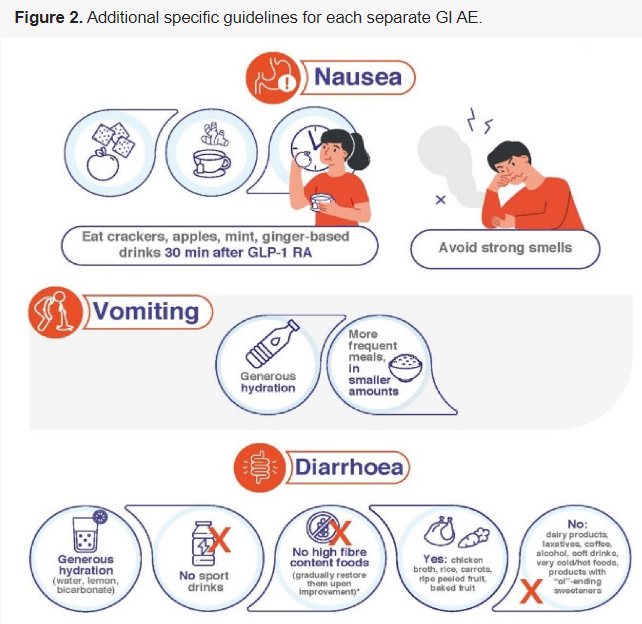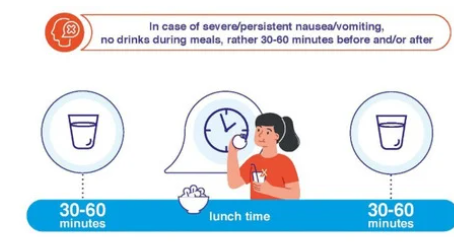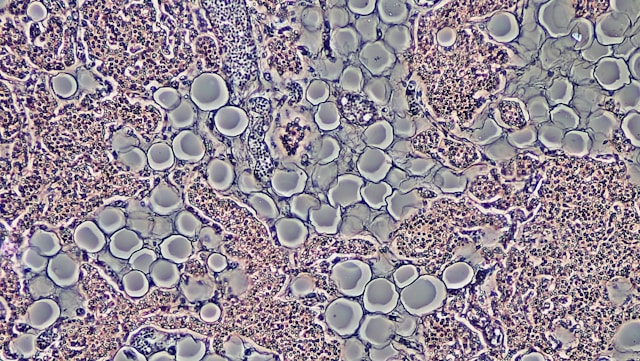by Rich Weil, M.Ed., CDE
Founder and Director
Transformation Weight Control
In this blog I am going to speak about the medications approved for weight loss called GLP-1s and GIP and how they help you lose weight. Appetite regulation in the human body is extraordinarily complex; I am going to make it as simple as possible in this article. The GLP-1s and GIPs approved by the FDA for weight loss are: Saxenda (liraglutide), Wegovy (semaglutide), and Zepbound (tirzepatide).
Terms:
Glucagon-like peptide-1 receptor agonist (GLP-1 RA): a hormone secreted from the intestine when you eat. It activates the GLP-1 receptor, which in turn slows gastric emptying, inhibits the release of glucagon, and stimulates insulin production. More about all of this shortly. It is an incretin hormone (see below).
Glucose-dependent insulinotropic polypeptide (GIP): a hormone secreted from the intestine when you eat. Its main role is to stimulate insulin secretion, which improves glucose levels and insulin tolerance, and as a result reduces hyperglycemia (high blood sugar). It is an incretin hormone (see below).
Receptors: Chemical structures made of protein that receive and transmit chemical signals into the body, particularly the brain in the form of electrical signals, which causes different reactions. They are located all over the body. For example, a single fingertip might have more than 3,000 touch receptors! Damaged receptors do not receive the input signal which can lead to harm in our body. There are millions of receptors in the body.
Incretins: Hormones released from the small intestine when you eat. They bind to the receptors they are designed to bind to. GLP-1 medications bind to GLP-1 receptors in special cells in the pancreas called pancreatic beta cells. Pancreatic beta cells are very important because they secrete insulin. Insulin is critical for glucose metabolism because it permits glucose to leave the blood stream and enter cells. For example, it permits glucose to enter muscle cells from the blood stream so the muscle can use it for fuel. Think of insulin as the key that opens the door to the cells. It also works fast. It is secreted within 7 seconds after you eat. Both GLP-1 receptor agonists and glucose-dependent insulinotropic polypeptides are incretins.
Biological agonists: a chemical substance that binds with a receptor designed specifically for that chemical. When the receptor is activated by the chemical (such as a weight loss medication like a GLP-1), activates it induces the action or response that the receptor is programmed to do.
GLP-1 incretins are very effective and safe weight loss medications. Typically, they are studied first to treat diabetes, and then go back to the FDA for approval for weight loss.
They work so well for one thing because, it turns out, there are more GLP-1 receptors located all over the body than originally thought, and all have positive health benefits when activated. The agonist part of the GLP-1 receptor agonist means that GLP-1 medications activate the GLP-1 receptors located in the stomach, brain, liver, and pancreas, all of which help you lose weight. All of the following mechanisms in these organs have the effect of controlling your appetite, your hunger, and your consumption of excess food and calories. This is why GLP-1s are so effective at weight loss.
Every week new benefits of the GLP-1s show up in research articles. Dementia, Alzheimer’s Disesae, Parkinson’s disease, depression, kidney function, male and female fertility, prevention of diabetes, cardiovascular events such as heart attacks, and more. The list goes on and on, so much so that it’s almost difficult to keep up with it. For this blog, I am covering the following organs because they have a direct effect on weight control.
-
In the stomach, GLP-1s slow down gastric emptying, that is, they keep food in the stomach longer than normally occurs, thus giving you a sense of fullness (satiety) you may not have experienced before. As a result, you eat less.
-
In the brain, GLP1s decrease appetite, food cravings, and obsessing about food by interfering with the food reward pathway. The food reward pathway gives food the value you experience and attribute to food (sometimes called food salience). For instance, the reward value for a chocolate chip cookie might be higher in a person with obesity than a person who does not have obesity. In some food studies, subjects may be asked, “how hard would you work for food?” This can be an indication of the reward value of a specific food if the individual says they would work very hard for the specific food. You all know your favorite craving foods. Your favorite ones have the highest reward value. When GLPs do their thing and reduce food cravings and obsessing, and slow down the reward pathway, individuals tend to describe this as less “food noise” in their head. We hear this from our program participants all the time.
-
In the pancreas. GLP-1 receptor agonists act on the pancreas by enhancing insulin secretion, inhibiting glucagon release (see #4 below), and there is some evidence to suggest that they protect the beta cells from damage. While concerns about pancreatic safety exist, the overall risk appears to be minimal, and the health risks of having obesity justify the use of GLP-1s. The benefits of these medications for body weight and diabetes management are well-established.
-
GLP-1s decrease glucagon secretion. Glucagon is a hormone that helps control blood glucose (sugar). It is produced in the alpha cells of the pancreas (insulin in the beta cells as I described earlier). Our bodies are dependent on glucagon to help keep our blood glucose in normal ranges, however, if you have too much glucagon in your circulation, your cells won’t store sugar; instead, the sugar will remain in your bloodstream. Excess sugar in the blood has a negative effect on large and small blood vessels which can affect the heart, and cause problems for nerves, feet, kidneys, and the eyes. These are frequently the complications for individuals who have diabetes that is uncontrolled. Plus, swings in blood sugar from high to low, or low to high, will make you hungry, increase your appetite, and lead to increased food and calorie intake.
-
GLP-1s help with insulin secretion to keep blood sugars under control. Control over insulin secretion helps with weight loss because insulin stores fat, heightens perception of sweet foods, and makes you hungry, which leads to increased food intake.
-
In the liver, GLP-1s decrease glucose production and improve insulin sensitivity. Decreasing glucose production keeps blood glucose under better control, and improving insulin sensitivity means the pancreas doesn’t have to over work, which in the long term (10 years or so) can cause diabetes.
Side Effects
Yes, GLP-1s have side effects, the most common being nausea, vomiting, diarrhea, and constipation. Scientists are working on solutions to these side effects. A study for remedies to the side effects was performed by Gorgojo et al and published in the journal, Journal of Clinical Medicine in 2023 (see the infographics at the end of this article for their recommendations).
GIP Glucose-dependent insulinotropic polypeptide
The GLP-1 medications Saxenda (liraglutide) and Wegovy (semaglutide) use just one mechanism of action, that is, they activate GLP-1 receptors and cause all of the above effects on appetite regulation and body weight. Zepbound (approved for weight loss) and Mounjaro (approved for diabetes) both known as tirzepatide, cause more weight loss than Saxenda and Wegovy because they have two mechanisms of action: 1) GLP-1 and 2) GIP.
GIPs work like GLP-1s in the pancreas, stomach, and brain, but they also work in fat cells, controlling the enzyme lipoprotein lipase (LPL). This enzyme plays a major role in breaking down triglycerides in fat cells where they are stored, which causes the fat cell to release the stored fat into the blood stream, which in turn makes the fat cells shrink, and that’s how you lose weight – when fat cells shrink. LPL is also a key player in the transport of fats to the cells that need the fat for fuel, particularly muscle cells. The end result is you have smaller fat cells and less fat in the system, which ultimately leads to less body fat and weight loss.
Before I wrap up, I want to let you know that I created a weight loss medication support group at TWC because I realized that people were losing a lot of weight, faster than they were used to, and were bewildered by all the weight loss and all the other changes that the medications were providing. Less food cravings, feeling full, not feeling hungry, leaving food on your plate, not obsessing about food, less food noise in their thoughts, changes in body image, shopping for clothing at brick and mortar stores, and so many other changes that it was unnerving, so I decided these folks needed support for navigating all the physiological and psychological changes that they were experiencing. In my 44 years of doing this work, I have never seen any medication work as effectively as these GLP-1s. They are true game-changers, and that’s a term I don’t believe I’ve ever used in my life, to describe anything!
For more information about our Weight loss Medication Support group, you can click HERE. (Opens in a new tab).
In conclusion, GLP-1 receptor agonists are medications with a single mechanism of action, that is, they activate GLP-1 receptors at various organs, all of which contribute to weight loss. Glucose-dependent insulinotropic polypeptides add a second mechanism of action which affects the breakdown and transport of fat, which ultimately leads to lower body fat and weight loss. The medication Zepbound has two mechanisms of action, GLP-1 and GIP. The double mechanisms makes Zepbound more effective at weight loss than the single mechanism of action GLP-1s such as Saxenda and Wegovy. But Saxenda and Wegovy still give you a big bang for your buck, so any of the three are all effective at helping you lose weight.
As promised, here are infographics of suggestions for management of GLP-1 and GIP side effects. Experiment with all of them to determine if any of them help you.
Source: Gorgojo et al, published in the journal, Journal of Clinical Medicine in 2023. Experiment with all of them and see what works for you.



© 2025 Rich Weil, M.Ed., CDE, All Rights Reserved











